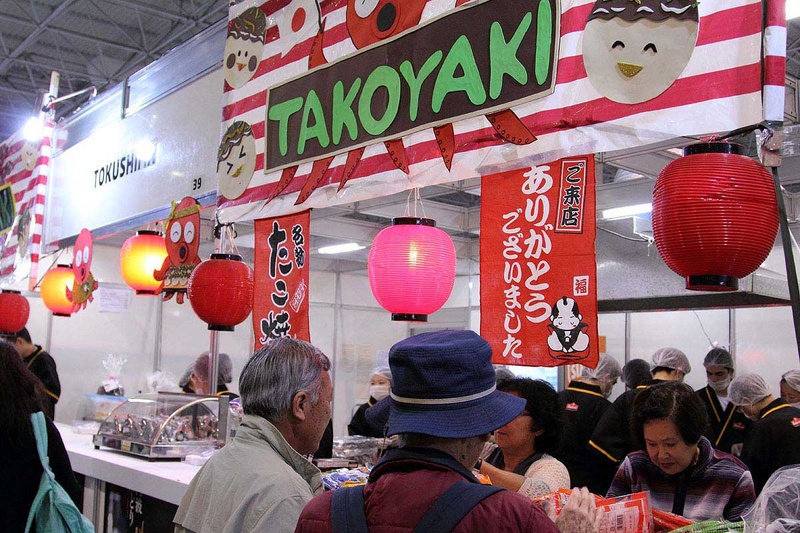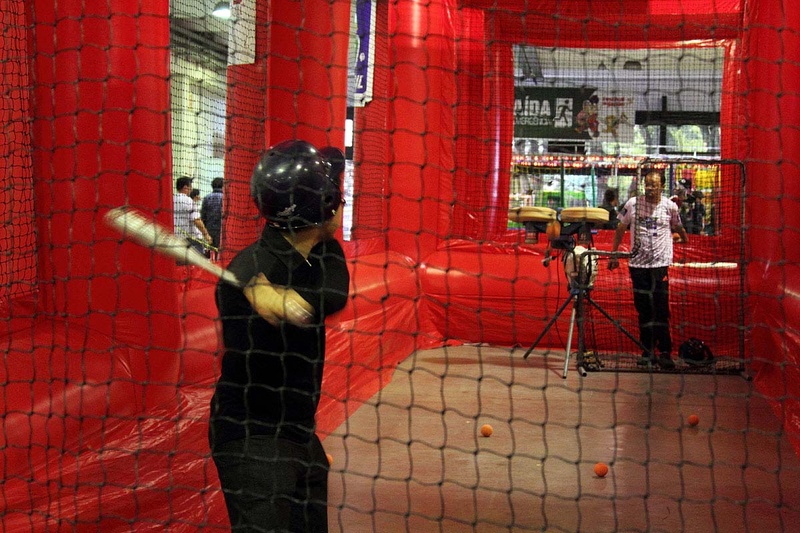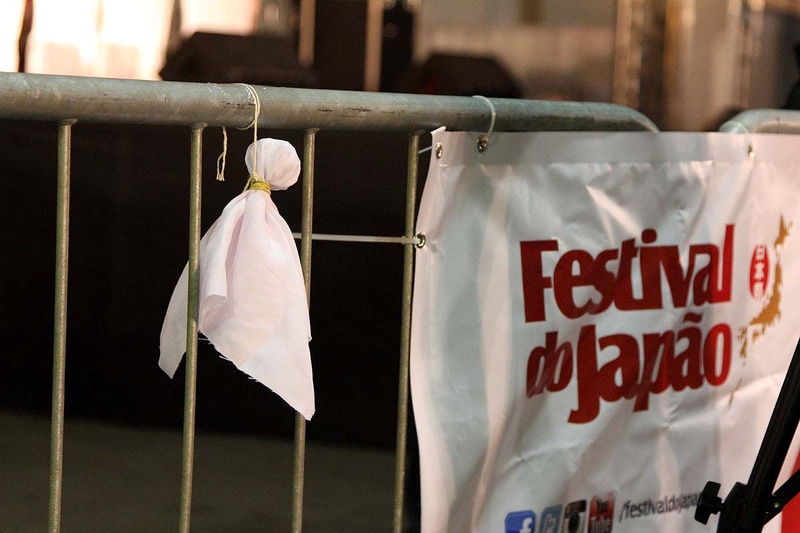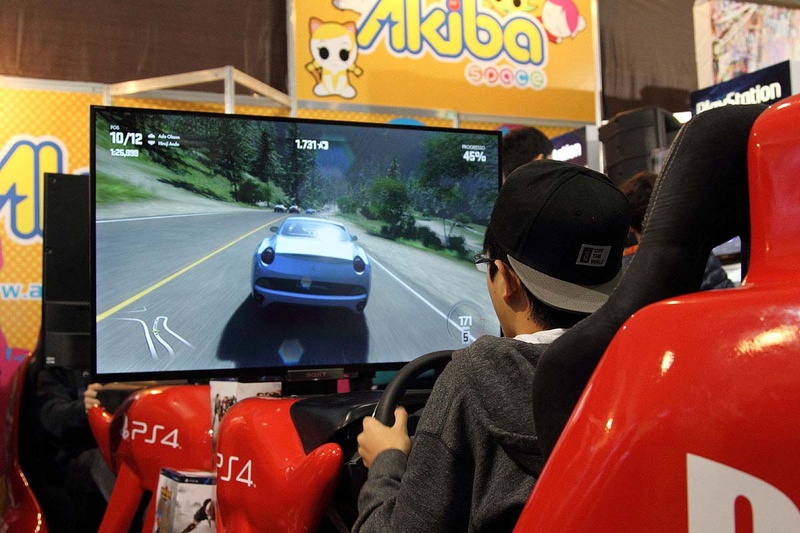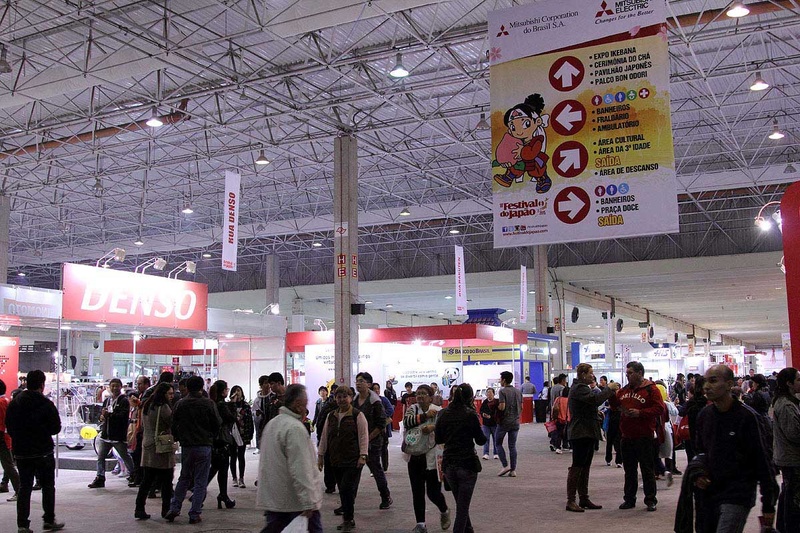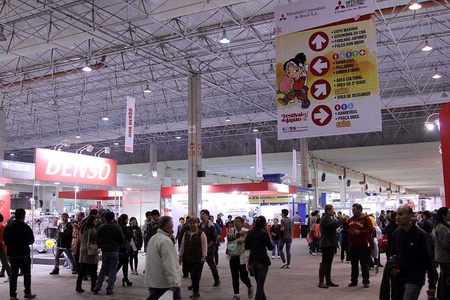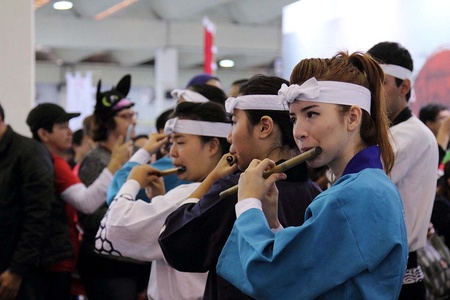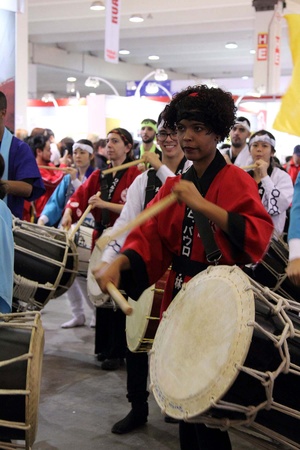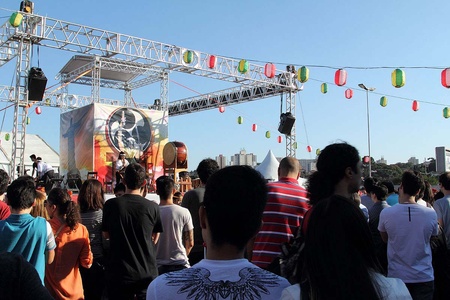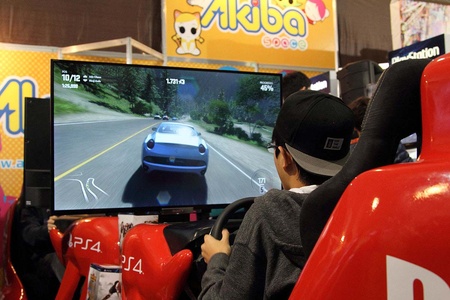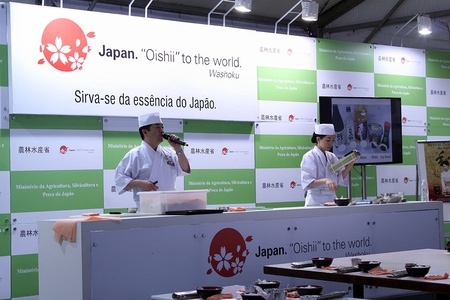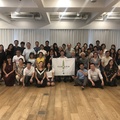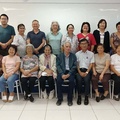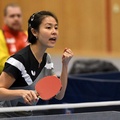Festival do Japão (Japan Festival) is one of the main events of the Nikkei community in Brazil, especially regarding physical space, attractions, and number of visitors. In 2015, it reached its 18th edition.
The event is organized by Kenren, the federation of the Japanese prefectures associations in Brazil. This year, Japan Festival was held on July 24, 25, and 26.
The organization estimated the number of visitors to be about 180,000 people. Entrance is paid, but all internal activities are free. Also, there are free shuttles between the event and the nearest subway station.
At each festival, organizers choose a theme, such as sustainability, health, happiness, etc. This time, the choice was a tribute to 120 years of the Treaty of Friendship, Commerce, and Navigation signed between Brazil and Japan in 1895.
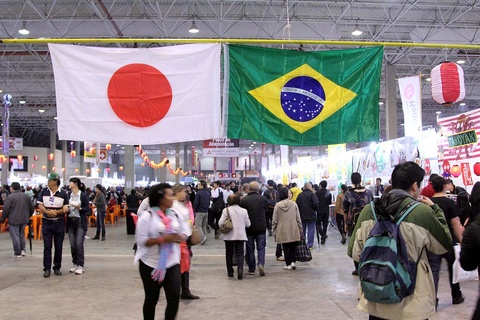
The first Japan Festival was held in 1998 to celebrate the 90th anniversary of Japanese immigration to Brazil. The goal, since then, continues to be the dissemination of Japanese culture, with typical cuisine of the Japanese prefectures as the main attraction.
The first time I went to the festival was in 2003, when I began to participate more actively in the Nikkei community. At that time, I went as a regular visitor. Starting from the following year, I went as a volunteer for the Hokkaido association to help friends.
In 2006, I joined the Nara Kenjinkai of Brazil. Nara is one of the prefectures of my family, so I had applied to a scholarship. One of the requirements was to help the association’s activities; among them, the Japan Festival.
Kenjinkai volunteers help long before the event is opened to the public. They must set the dishes that will be served, summon more volunteers, prepare task lists, design posters, create decorations, and buy ingredients. In the three-day festival, it is necessary to transport the material, clean the stands, and install equipment (stove, grills, pans). At the end of the event, also, they need to clean it up, wrap, and take everything away.
Also, they should know how to transmit information about the prefecture, such as location, tourist spots, and some visitors even ask about the local economy. Of course, what visitors want to know the most is about the typical dish served. So, the volunteers must be able to explain ingredients, tell the origins, and some trivia.
Attractions
Along with the food stands, there are other attractions at the Japan Festival. Dance presentations, martial arts, workshops, exhibitions, and concerts with singers and bands from the Nikkei community.
A special place is dedicated to the elderly, with activities planned specifically for this audience. “We started just as a resting area for the elderly. Then, we kept on incorporating several things. The number of stands increased with several services, lectures, and the gateball field. Then, we included an auditorium with lectures for seniors and, more recently, also to the caretakers. We try to bring more and more new features, including new products for the elderly market,” said William Suzuki, 53 years old, Nisei, coordinator of the area for nine years.
To make communication easier, there are volunteers who speak Portuguese and Japanese. Lectures are also given in both languages. “Care for the elderly is one of the values of Japanese culture,” added Suzuki.
Likewise, there is an area dedicated to children, with games and educational activities inspired by Japanese culture. Children can learn to make origami, kirigami, and kites, and participate in scavenger hunts and other games.
“Our idea is to receive the kids, both descendants and non-descendants, and show them aspects of Japanese culture in their own language. In each activity, we try to include new information about Japanese culture. For example, to make a drawing, we include an icon of Japanese culture, such as a Daruma. In the drawing itself, it is written what the Daruma means and the legend of this talisman. The information goes for parents too, because often the child does not understand what is written, but manages to capture the drawing. With that, I think children keep this information in their memory,” said Milton Nakabayashi, 62, Sansei, coordinator of the children’s area for 12 years.
Traditional arts also have their guaranteed space. During the festival, workshops and exhibitions of shodo, ikebana, origami, kirigami, and tea ceremonies are held, always with great audience participation.
Daniel Kasa, 32, Yonsei, has been a volunteer at the shodo stand since three years ago. He began the practice of traditional Japanese calligraphy after a visit to Japan Festival eight years ago. “It’s important to keep our culture, our Nikkei roots. I have observed that many Nikkei can not speak nor write [in Japanese]. With a shodo stand here at the festival, I believe it can create a curiosity, as it happened to me,” he explained.
Kasa accounted that the stand also attracts non-descendants, often motivated by the desire to know how to spell their own name in Japanese. “The ideogram is aesthetically beautiful and has a meaning. I think that is what draws their attention,” he added.
Visitors
Tabatha Marcos, 16, African descendant, visited the event for the first time. “I am delighted with it all. I am very interested in Japanese culture. I really like anime, the culture itself, and the Asian stories,” said the teenager.
Clara Teles, 44, also an African descendant, took her daughters for the second time to the festival. “My daughters are very fond of Japanese culture. We all like the food. My daughter likes the ‘soup of the samurai’ [Houtou]. I like sushi and sashimi. I’m not a fan of fried foods,” she said.
Besides the cuisine, the family also expressed interest in other subjects. “We love sumie, origami, massages. I like everything you have here,” added Clara.
Bruna Serafim, 19, from a Portuguese family, has been studying Japanese for five years. “With the festival, I can learn new things that the course does not offer. Also, I have contact with the descendants and the Japanese themselves who come here.” In her third visit to the event, she said that she is very interested in Japanese dance, “the traditional and the modern that also have Japanese music.” As a Japanese student, she stressed the importance of having brochures in both languages. “It’s not because we are in Brazil that everything must be in Portuguese, they should be available also in ‘Nihongo’.”
Gabriel dos Santos, 26, Portuguese and African descendant, attended the festival for the first time after being invited by Nikkei friends. He was surprised by the event size because he imagined it would be just a few tents; after all, he had never seen any kind of advertisement of the event.
Fond of Japanese cuisine, Santos chose takoyaki, which he already knew, and the okowa. “There’s lots of good food, lots of choices, including some dishes that I had never seen.”
Shows
At the Japan Festival, there are presentations of Japanese artists “from Japan” as well. In Brazil, it is often necessary to do that little extra and redundant amendment, for the word “Japanese” is also used to refer to the Nikkei.
Japan Foundation organized the coming of Bugaku-za group, which presented the performatic art of the samurai, with elements of martial arts and Noh theater. Singer Tsubasa Imamura became famous for singing classics of Brazilian music in Portuguese and Japanese. Tsubasa comes regularly to Brazil and sings in other events too, just like the singer Mariko Nakahira, already well known in the Nikkei community.
In this edition, there was the Akiba Cosplay, in which many cosplayers and former cosplayers performed on the stage. The activity was part of Akiba Space, an area dedicated to Japanese pop culture, gathering games, manga, illustration, and youth fashion.
The festival also hosts the Miss Nikkey contest, whose purpose is to choose the most beautiful Nikkei of Brazil. Throughout the year, regional qualifyers are held nationwide. The finalists at last parade at Japan Festival. The winner receives prizes such as trips, jewelry, and other gifts from sponsors.
Government of Japan
Entities linked to the Japanese government also participated in the Japan Festival.
JICA (Japan International Cooperation Agency) announced its scholarships and organized an exhibition about the results of the programs developed in partnership with Brazil.
Japan Foundation’s booth hosted an exhibition related to its activities, focusing on images and objects brought by Bugaku-za group, in addition to the announcement of upcoming events.
The Ministry of Agriculture, Forestry, and Fisheries of Japan organized a series of lectures about Japanese cuisine, covering topics such as preparation of sushi and traditional Japanese sweets.
Meeting friends
The Japan Festival is currently considered the main event of the Nikkei community in Brazil; it is the one that receives the most visitors, has more sponsors, and appears a bit more in the media outside the community.
Above all, it is an opportunity to find relatives and friends who are there as volunteers in the stands, participating in artistic performances, or just as visitors. From this pont of view, Japan Festival fulfills its role as an authentic matsuri.
© 2015 Henrique Minatogawa



